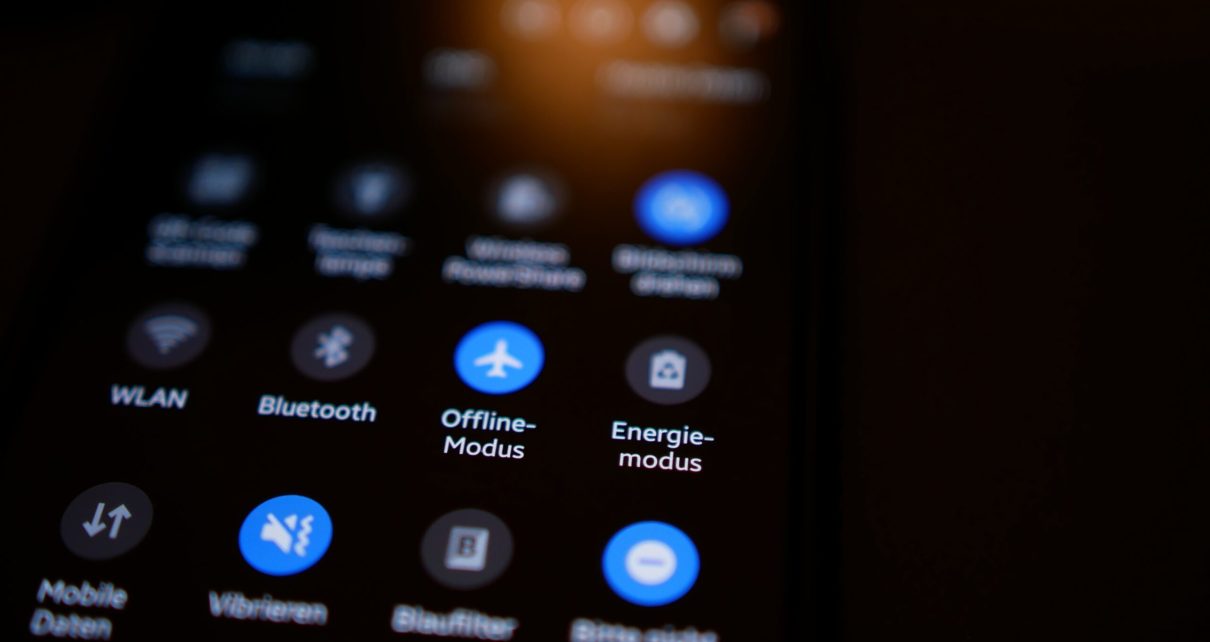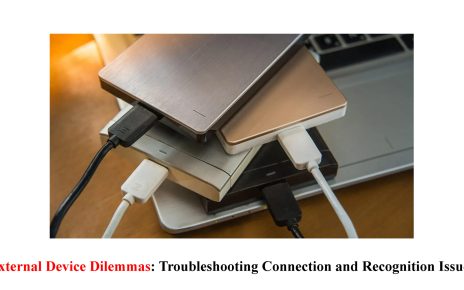Introduction to Bluetooth Connection Problems
Are you tired of frustrating Bluetooth connection problems on your mobile phone? We’ve all been there – when you’re ready to enjoy wireless convenience, your device decides to play hard to connect. But fear not! This blog post will explore Bluetooth connectivity and why these issues occur. More importantly, we’ll provide various troubleshooting steps to help resolve those pesky problems once and for all! So grab your phone, put on your problem-solving hat, and Lenquer Bluetooth connection woes together!
Why These Problems Occur
Bluetooth connection problems can be frustrating, especially when connecting your mobile phone to another device. But have you ever wondered why these issues occur in the first place? Understanding the reasons behind Bluetooth connection problems can help you troubleshoot and fix them more effectively.
One common reason for Bluetooth connection problems is signal interference. Bluetooth operates on a radio frequency, and if other devices or objects nearby also use this frequency, it can cause interference and weaken the signal strength. Physical obstacles like walls and furniture can block or disrupt the Bluetooth signal.
Another factor that contributes to these problems is outdated software. Like any other technology, your mobile phone’s operating system and the device you’re trying to connect to need to be updated regularly. Outdated software may not be compatible with newer versions of Bluetooth, leading to connectivity issues.
Sometimes, compatibility issues between different devices can also cause Bluetooth connection problems. Not all devices are built equal, and some may have limitations or restrictions when establishing a stable connection via Bluetooth. It’s essential to ensure that both devices are compatible and meet the specifications for seamless connectivity.
In addition, user error or incorrect settings configurations could also be at fault for these connectivity issues. For example, you must turn on your device’s discoverability mode or pair correctly with another device to avoid failed connections.
By understanding why these problems occur in the first place, we can take steps towards resolving them more efficiently. In the next section of this article, we’ll explore troubleshooting steps for common Bluetooth issues so that you’re better equipped to tackle them head-on!
Troubleshooting Steps for Common Issues
Need help with your Bluetooth connection? Don’t worry, you’re not alone. Bluetooth connection problems are a common issue that many mobile phone users face. But fret not! There are some simple troubleshooting steps you can take to resolve these issues and get back to enjoying seamless connectivity.
First, do you know if your device is in pairing mode? Sometimes, the problem lies in the initial setup process. Could you ensure both devices have their Bluetooth settings turned on and are discoverable? This will ensure they can find each other and establish a successful connection.
If that doesn’t solve the problem, try turning off your phone’s Bluetooth and turning it back on again. This simple step can often reset any minor glitches or conflicts causing connectivity issues.
Another thing you can do is clear the cache of your Bluetooth app or service. Over time, temporary files and data buildup can slow down or disrupt connections. Clearing the cache can help improve performance and resolve any underlying issues.
Also, are there any physical obstructions between your devices? Walls, furniture, or even other electronic devices nearby could interfere with the signal strength of your Bluetooth connection. Moving closer to the paired device or eliminating obstructions might do the trick!
If none of these steps work, please consider deleting previously paired devices from your phone’s memory before pairing them again from scratch. Sometimes, old connections stored in memory can create conflicts when connecting new devices.
Remember to keep both software versions (phone operating system and connected device firmware) up-to-date, too! Manufacturers often release updates specifically addressing known bugs related to wireless connectivity.
By following these troubleshooting steps, you should be able to overcome the most common Bluetooth connection problems without much hassle.
Resetting Your Phone’s Bluetooth Settings
If you’re experiencing Bluetooth connection problems on your mobile phone, one of the first troubleshooting steps you should try is resetting your phone’s Bluetooth settings. This can help resolve any software glitches or conflicts causing the issues.
To reset your phone’s Bluetooth settings, you can start by using the settings menu on your device. Look for the “Bluetooth” option and tap on it to open the Bluetooth settings. Depending on your operating system, you may need to swipe down from the top of the screen or navigate through a series of menus to find this option.
Once you’re in the Bluetooth settings, look for an option that says “Forget” or “Unpair” connected devices. Tap on this option and confirm that you want to forget all paired devices. This will remove any stored connections and allow you to start fresh.
After forgetting all paired devices, turn off Bluetooth entirely and power off your phone. Please wait a few seconds before turning it back on and re-enabling Bluetooth. This process helps refresh all wireless connections and can often resolve connectivity issues.
Please also remember to check for any software updates available for your device since it sometimes causes compatibility problems with specific devices.
Following these steps, you can easily reset your phone’s Bluetooth settings and troubleshoot common connection problems!
Updating Your Device’s Software
Keeping your mobile phone’s software up to date is crucial for maintaining a smooth and reliable Bluetooth connection. Manufacturers often release software updates to address bugs, glitches, and compatibility issues that may affect Bluetooth functionality. By staying on top of these updates, you can ensure optimal performance.
To update your device’s software, you can check for any available updates in the settings menu. Look for the “Software Update” or “System Updates” option – it may vary depending on your device model and operating system.
If an update is available, please ensure you have a stable internet connection before proceeding. Connecting to Wi-Fi is best, as extensive updates can consume significant data. You can follow the prompts to download and install the update, depending on its size, which may take some time.
After updating your device’s software, you can restart it to apply any changes properly. This step helps clear temporary files and refresh system processes, potentially resolving Bluetooth connectivity issues.
Remember that regularly updating your phone’s software improves Bluetooth performance and enhances overall security and features offered by your device manufacturer.
Remember that these steps might slightly differ from one smartphone brand or operating system version to another; therefore, consult with the official documentation or support channels provided by the manufacturer if you encounter difficulties during this process.
Stay tuned for our next blog section to share valuable tips for maintaining a solid Bluetooth connection!
Tips for Maintaining a Strong Bluetooth Connection
Keep Your Devices Close: When using Bluetooth, you must keep your devices near each other. The further apart they are, the weaker the signal will be. So, stay within a reasonable distance from your connected device to ensure a strong and stable connection.
Minimize Interference: Other electronic devices or physical barriers can easily disrupt Bluetooth signals. Avoid interference by keeping your gadgets away from Wi-Fi routers, microwaves, and other wireless devices to maintain a strong connection. Removing physical obstacles between your phone and the connected device can also help improve signal strength.
Avoid Overloading Your Phone: Running multiple apps simultaneously or having too many background processes can strain your phone’s resources and affect its ability to maintain a solid Bluetooth connection. To avoid this issue, close unnecessary apps and clear up space in your phone’s memory before connecting via Bluetooth.
Check Battery Levels: Low battery levels on either device could cause connectivity issues with Bluetooth. Ensure both devices have sufficient battery power before attempting to connect. If one of the devices is running low on battery, consider charging it first before trying again.
Keep Software Updated: Keeping your phone’s software and the firmware of any connected accessories updated is crucial for maintaining optimal performance with Bluetooth connections. Manufacturers often release updates that include bug fixes and improvements related explicitly to connectivity issues.
Experiment with Device Positioning: Sometimes, adjusting the position of either device can make all the difference in maintaining a solid Bluetooth connection. You can move them around slightly or place them in different orientations until you find the best position where you experience minimal dropouts or interruptions in audio streaming.
Following these tips for maintaining a solid Bluetooth connection, you’ll enjoy seamless wireless communication without frustrating interruptions or disconnections.
When to Seek Professional Help
While many Bluetooth connection problems can be resolved through troubleshooting steps, there are times when seeking professional help may be necessary. If you’ve tried all the suggested solutions and your mobile phone still has Bluetooth connectivity issues, it’s time to consider contacting you for expert assistance.
One indication that professional help might be needed is if the problem persists across multiple devices or Bluetooth accessories. This suggests that the issue may lie with your mobile phone rather than a specific device or accessory.
Another red flag is if you’re experiencing frequent disconnections or intermittent connection drops despite being within the range of the paired device. This could indicate a deeper underlying problem that requires specialized knowledge to diagnose and fix.
Also, you have already updated your device’s software and reset its Bluetooth settings, but you don’t have to. In that case, it’s a sign that there may be an issue beyond what can be fixed by basic troubleshooting methods.
It’s important to remember that not all of us are tech-savvy experts capable of diagnosing complex technical issues. I want to point out that seeking professional help can save you time and frustration in resolving the problem independently.
Professional technicians have experience with various mobile phone models and their unique quirks. They possess advanced diagnostic tools and techniques that accurately identify root causes. They also have access to firmware updates or patches specifically designed for specific phones, which can further aid in resolving Bluetooth connection problems.
By entrusting your mobile phone’s Bluetooth issues into the hands of professionals, you’re increasing your chances of finding an effective solution quickly. Remember, it’s always better to seek expert advice when basic troubleshooting methods fail rather than continue to struggle alone.
So don’t hesitate! Suppose you find yourself at a dead end with persistent Bluetooth connection problems on your mobile phone despite attempting various fixes. In that case, it’s time to seek professional assistance from qualified technicians who specialize in mobile devices like yours.
Conclusion
Resolving Bluetooth connection problems on your mobile phone can be frustrating, but with the proper troubleshooting steps, you can overcome these issues and enjoy a seamless wireless experience. You can often resolve common connectivity issues by understanding why these problems occur and taking simple actions such as resetting your phone’s Bluetooth settings or updating your device’s software.
Additionally, maintaining a solid Bluetooth connection is essential for uninterrupted usage. Please remember to keep your devices in proximity, clear any potential obstacles between them, and make sure that both devices are fully charged. These small precautions can go a long way in preventing connection drops or poor audio quality.
However, if you have exhausted all troubleshooting options and the problem persists, it may be time to seek professional help. I’m contacting your mobile phone manufacturer or seeking help from an authorized service center that can provide specialized guidance tailored to your device.
Remember: when resolving Bluetooth issues on your mobile phone – stay connected!
Read More: Overheating Alert: How to Prevent and Resolve Mobile Phone Overheating Issues



